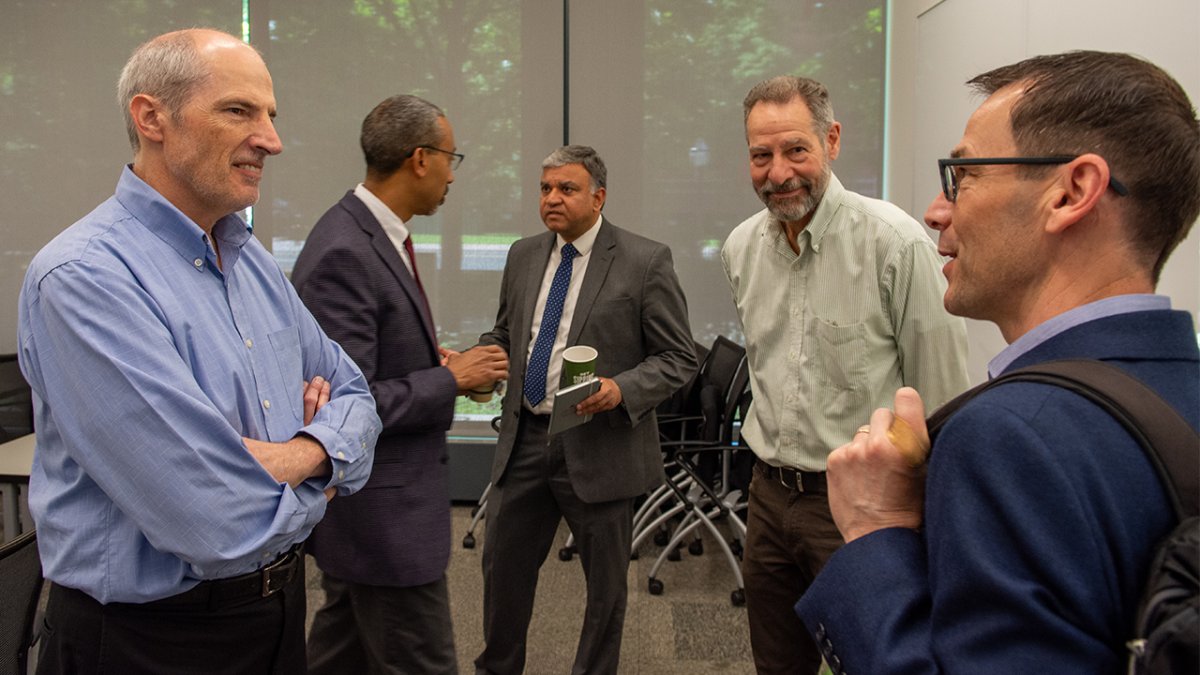CSE Professor Steven Koester named UMN's first chief semiconductor officer

University also launches new "CHIPS" website
MINNEAPOLIS / ST. PAUL (06/18/2024)—The University of Minnesota has named Steven Koester as its first Chief Semiconductor Officer and launched a website devoted to the University’s semiconductor and microelectronics research and education, chips.umn.edu.
Koester’s responsibilities will include coordinating University research and education initiatives and investments related to microelectronics and representing the University within larger efforts to advance Minnesota’s microelectronics industry with local companies, public agencies, and policymakers. The position will provide leadership in coordinating state-wide team building activities in order to respond to federal and other opportunities under the bipartisan U.S. CHIPS and Science Act, and the new website will highlight microelectronics-related work at the U of M and serve as a point of contact for interested collaborators.
“This is a great time for semiconductor manufacturing in Minnesota and the United States,” said Koester, who is the Russell J. Penrose Professor in Nanotechnology at the University. “Not only are we growing manufacturing capacity for silicon chips and other key components, but, with help from the CHIPS and Science Act, we’re seeing a real commitment from local companies, academic institutions, and government officials to work together to meet the needs of this industry and to provide high-paying jobs to more people.”
As evidence, Koester pointed to a recent announcement by the Biden Administration to award Bloomington-based Polar Semiconductor up to $120 million to double the company’s chip manufacturing output, with commitments from the company, the state, and others to leverage those funds with an additional $400 million. The federal grants are part of ongoing efforts to bolster the nation’s semiconductor supply chain.
The University of Minnesota is home to leading semiconductor research, particularly in sensors, materials science, nanotechnology, spintronics, and an area called 3D heterogeneous integration — which allows the integration of analog and digital circuit blocks with greater speed and lower power consumption. The University’s five campuses also graduate thousands of well-prepared students into the science and engineering workforce each year.
According to the University’s Vice President for Research and Innovation Shashank Priya, “We want to go further — to be leading cutting-edge efforts that grow this critical industry in Minnesota and attract both federal and private investment in Minnesota’s microelectronics industry. The Chief Semiconductor Officer role represents a commitment by the University to be an active part of Minnesota’s semiconductor industrial ecosystem, and we are pleased to have Steve representing us in this capacity. He will be a great asset to building new partnerships and attracting new resources, for research at the University and for our tech ecosystem.”
Priya and College of Science and Engineering Dean Andrew Alleyne recently recognized the efforts of the Minnesota Nano Center, led by Koester, and the Technological Leadership Institute for creating and executing a new training program for 60 employees of Minnesota microelectronics companies, including Polar Semiconductor, Honeywell, and Collins Aerospace, providing them a comprehensive overview of how integrated circuits and other microdevices are made. The course organizers have applied for additional support from the Minnesota Department of Employment and Economic Development to educate a new cohort next year, and have attracted interest from several additional technology companies to take part in the training. The initiative is representative of new U of M efforts to partner with and meet the needs of industry and workers. The program is under the auspices of the Minnesota Semiconductor Manufacturing Consortium (MSMC) launched last June.
“We at Polar Semiconductor welcome the University’s appointment of Prof. Koester to this new leadership position,” said Polar President Surya Iyer. “In addition to our recent workforce training collaboration, Polar and the University are continuing to build joint projects that address national security and cutting-edge commercial needs, and partnering to attract new investments in Minnesota research and innovation. It all contributes to making Minnesota the home of choice for the next generation of entrepreneurs and professionals who are looking to innovate, create, and grow the ideas of the future.”
Koester is a professor in the Department of Electrical and Computer Engineering and director of the Minnesota Nano Center in the College of Science Engineering, roles he will continue while serving as chief semiconductor officer. His current research focuses on novel electronic, photonic, spintronic, and sensing device concepts with an emphasis on emerging material systems. Before joining the University in 2010, he spent more than a dozen years as a research staff member at the IBM T. J. Watson Research Center. He has authored or co-authored over 300 technical publications and conference presentations, 7 volumes, 4 book chapters, and holds 79 United States patents. He is a Fellow of the IEEE and Optica.
